
International Superstar Soccer 3
Written by: Rik
Date posted: July 26, 2014
- Genre: Sport
- Developed by: Konami Computer Entertainment Osaka (KCEO)
- Published by: Konami
- Year released: 2003
- Our score: 6
For a home computer ignoramus like myself, the International Superstar Soccer games were at one point simply a homogeneous mass of console superiority. Deluxe, Pro, 64…the names mattered not, they were all better than FIFA (or the other dross we got on PC). In actual fact, once the series made its way onto PSX and N64, it had effectively split in two, with the ISS games developed by KCEO on the one hand, and the Goal Storm/Winning Eleven series developed by KCET on the other. In Europe, for some reason, the latter confusingly still retained the ISS name until it evolved into Pro Evolution Soccer. Still, it was easy enough to differentiate the series by format: ISS games were on Nintendo 64 while ISS Pro games were on PlayStation. But then ISS was released on the PlayStation, a new version was a release title for the PS2 (misleading fans eagerly anticipating ISS Pro Evolution) – and from then on, for a time, the two series existed side by side.
Back in PC land, of course, we were unencumbered by such confusion, as nothing approaching a decent football game had been released in years. Unimpressed reviews of the latest FIFA would make passing reference to the console wonderland of ISS games, but PC versions were not forthcoming. Until finally, it was announced: ISS is coming to the PC! But it was only then did we realise it wasn’t the one we wanted.
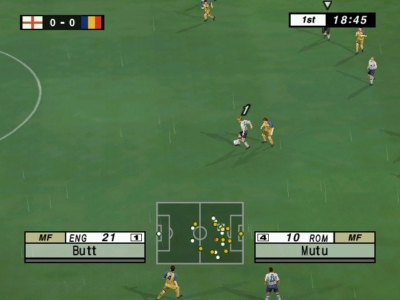
Gerrard’s injured, so you’ve got a choice of Hargreaves or Butt to replace him. Good luck, Engerland!
By 2003, Pro Evolution Soccer (the old ISS Pro) had long established itself as the superior of the two series and it was becoming harder to justify the continuing existence of ISS on the basis that it offered a more accessible arcade alternative. In fact, International Superstar Soccer 3 was the final release in the series before it was killed off. But it was also the first to be released on the PC (although PES 3 followed shortly afterwards).
I suppose the main distinguishing feature of ISS 3 is its lineage back to the original ISS games on the SNES, and if you revisit those now, you’ll note that, despite offering a more realistic game of football than other games around at the time, there was a certain cheery cartoon lunacy to it all. The intention seems to have been to retain the same vibe here, at least when it comes to the general presentation, with flashy menus, crazy music and eccentric commentary all featuring. (Ok, so PES wasn’t exactly without some bonkers idiosyncrasies of its own at times, too, but at least here it seems more in keeping with the series history).
While we’re talking about presentation, we may as well get this out of the way: ISS 3 is visually pretty awful. The main issues involve the resolution, stubbornly fixed at 640×480 (which was a bit passé even 11 years ago), and the complete absence of visual polish, filters and effects that make the game still look rather acceptable on consoles. The PC version should look better, not worse, or have adjustable resolution at the very least. To be frank, it didn’t strike me as representing much of a visual leap from the two, much older, football games we’ve covered recently, and that’s a real shame. There are also some serious issues with the camera, which seems to flit in and out regardless of the zoom setting you specify.
The bad graphics are the only real surprise, because, as we mentioned, you kind of anticipate hyperactive music and crap commentary as part of the package. And, to be fair, ISS 3 doesn’t disappoint on either front. The menu music is a frenetic, panic-inducing guitar pop number with a main hook that is vaguely reminiscent of the riff from The Fly (kids, ask your parents). Meanwhile, before you even get to the commentary (supplied by Jon Champion and Mark “I’m bored of this match already” Lawrenson) your ears are assaulted by a cockney stadium announcer who welcomes the teams onto the pitch using an accent best described as a bad Steve Lamacq impression: “Lyoidees and gientolmun, ploise wyelcome the tiew tyemes”.
The game does have licenses for real players names, which was a bit of a new thing for Konami football games at the time, and there seems to have been an attempt to highlight notable players in the commentary – the Beckhams, Figos and Zidanes of the world, as well as the goalkeepers, with any saves from former England stopper David Seaman being accompanied by a reference to his “safe hands” branding, although by this point I think his reputation had been undermined by some increasingly uncertain displays at club and international level (the unfortunate denouement being when a Macedonian player scored direct from a corner in a Euro 2004 qualifier).
As usual, though, authenticity is undermined by poor scripting and delivery. Player names are sometimes preceded by their position, but it’s been recorded in a way that makes it sound stapled together (“DEFENSIVE MIDFIELDER…Vieira”). Managers and coaches (who finish prominently in cut scenes, a good move) are also mentioned frequently, but without reference to their names, just their job title, delivered in the same incongruously stilted way (“ENGLAND MANAGER…was saying before the match that he respects all opponents“).
In terms of the on pitch action, the link to the original ISS games is evident in most of the game’s fundamentals – passing, sprinting, shooting etc. There’s a certain arcadey immediacy to all of the action, which fans of the series will recognise. Other mildly zany innovations include the camera whooshing up close just before a goalbound header, focusing on the player as if he were a Pokémon about to unleash a signature move. Also, when dribbling the ball in an attacking position you can also enter a one-on-one with a defender by tapping a shoulder button on the joypad, at which point the camera will zoom in on you as you attempt fancy footwork. This seems like quite a good idea, but it doesn’t seem to have been implemented that well, and you can safely ignore it for the duration. It’s not required to beat a man, and the change of perspective can be off-putting if anything.
Despite these touches, it’s not immediately and obviously differentiated from PES, or any standard footy title of the era. If they were going for an arcade approach, they could have gone for a brighter visual style such as that employed by, say, Virtua Tennis, for example. That’s not to say it’s bad, though, and certainly with time its particular and unique charms reveal themselves. To dip into the big bag of gaming clichés, it’s easy to pick up but rather harder to master. Matches are of an end-to-end nature, encouraging cavalier attacking football, and on the top two difficulty levels, opponents can be pretty ruthless in finishing you off if you don’t take your own chances.
Like the ISS of old, a lot of goals are scored via rebounds, either off the keeper or the inside of one of the posts, which seem to be hit with notable regularity. Defending can be tricky, mostly due to the fact that virtually every unsuccessful tackle (standing or sliding) will earn you a yellow card. It’s clear that the various skill moves and tricks are there to be used rather than for show, so those hoping to just pass the ball around are likely to come up short. The computer certainly isn’t shy about flicking the ball over your head, either, often to good effect.
On the hardest difficulty, its not impossible to play well, but winning is rather trickier, as the odds seem stacked against you in a manner reminiscent of coin-op football games. But this is the nature of the challenge that ISS presents: with only international teams and a limited number of tournaments available, you’re not going to have anything of the scale or depth of the PES Master League to tackle, so it’s about overcoming opponents with things skewed against you – winning the World Cup (or ‘International Cup’) on the highest difficulty is pretty much it, but it will take some doing.
It’s a perfectly valid approach of course, but it’s not necessarily everyone’s cup of tea, and those seeking greater variety are likely to find ISS 3 rather limited. I have heard tell of extra modes – club teams and scenarios, for example – in the console versions, but they aren’t in this one. The latter, in particular, would have been a good addition, as it was a prominent feature of the 16-bit games back in the day – win a game with only ten minutes left, or keep your opponents at bay with only 10 men – that kind of thing. Who knows why, but it’s been left out here.
ISS 3 is a different, but ultimately inferior, beast to the PES series. It’s pretty playable, and offers a different kind of challenge, but it’s not hard to see why Konami could no longer justify keeping both franchises going. Having subjected myself to some fairly bad footy titles recently, though, it was a relief to finally get a good one. For PC owners this is the only chance to experience a successful and long running footy franchise, too, and despite the technical issues and general sloppiness of the port, this one just about earns a recommendation.

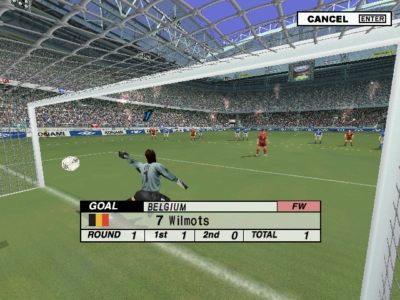
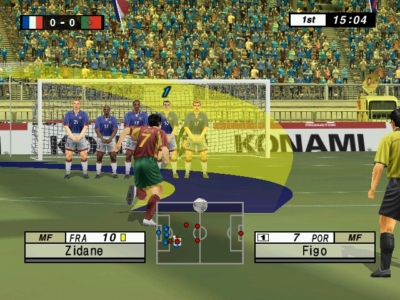
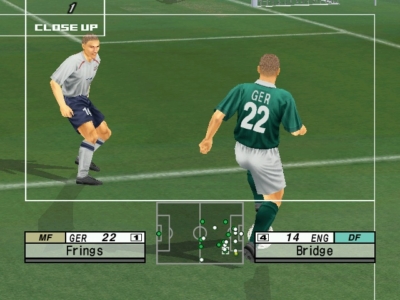
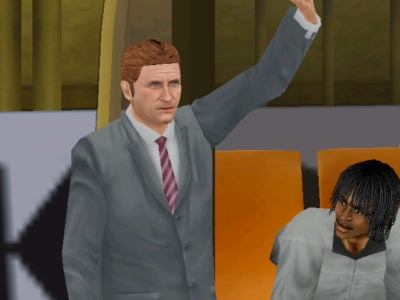

 Posts
Posts